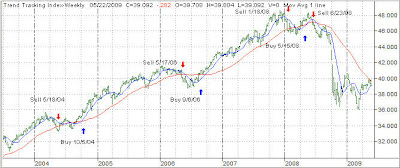 Ever since I left Germany in 1973 and immigrated to the United States, I was of the opinion that this country’s prosperity was based on survival of the fittest.
Ever since I left Germany in 1973 and immigrated to the United States, I was of the opinion that this country’s prosperity was based on survival of the fittest.
I was reminded of that when I read “That’s Not the American Way: Chrysler’s Bailout and the Road to Ruin:”
Chrysler’s plan to close about 25% of its dealers is the natural outcome of a series of very unnatural events surrounding its bankruptcy, says Howard Davidowitz, chairman of Davidowitz & Associates.
Specifically, Davidowitz was speaking about how the Chrysler bankruptcy was “hijacked” by the Federal government, which allegedly threaten creditors “if they didn’t go along with the fiasco of turning the company over to the unsecured lenders.”
Barack Obama’s plan is to “sustain the union” in an effort to secure future votes in five key Midwestern states, Davidowitz says, without hesitation. “We the taxpayers are bailing out the union [and] bailing out Chrysler, which is an inefficient company that shouldn’t survive and can’t survive in the long run, anyway.”
More generally, the Chrysler saga is evidence of how “we keep putting more money into hopeless companies,” he says. “That’s not the American way. We let inefficient companies collapse and be replaced by more efficient companies. That’s the only way this economy can work.”
By propping up inefficient companies and keeping zombie banks alive, Davidowitz says “we are exactly on the same path as Japan,” which is now two decades into its economic malaise.
But there’s one key difference between the U.S. and Japan: While they had about $16 trillion in savings and a 19% savings rate when their bubble burst in 1989, the U.S. savings rate was negative a year ago, a now a relatively meager 4.2%.
“That’s a big problem for the financial stability of the U.S.,” says Davidowitz, who had a hard time envisioning an alternative to a very grim scenario for America: “With big government, mad borrowing, and not letting things fail, there’s no way we can have [rising] living standards,” he says.
[Emphasis added]
Sad but true. The United States has now taken a path that is about as un-American as I have ever seen one. By implementing policies that no longer let only the fittest companies survive, we are now having the fittest compete with the sickest because they are being propped up for dubious reasons.
I have no idea at this point whether we will be following Japan’s path to a lost decade (or two), or if we can manage to come to our senses and change course before it’s too late.
Nobody has that answer, but I am sure that, no matter which road we will be forced to travel, investment opportunities will present themselves to those who are not only prepared to take them but also disciplined enough in their approach to survive even treacherous market conditions.






